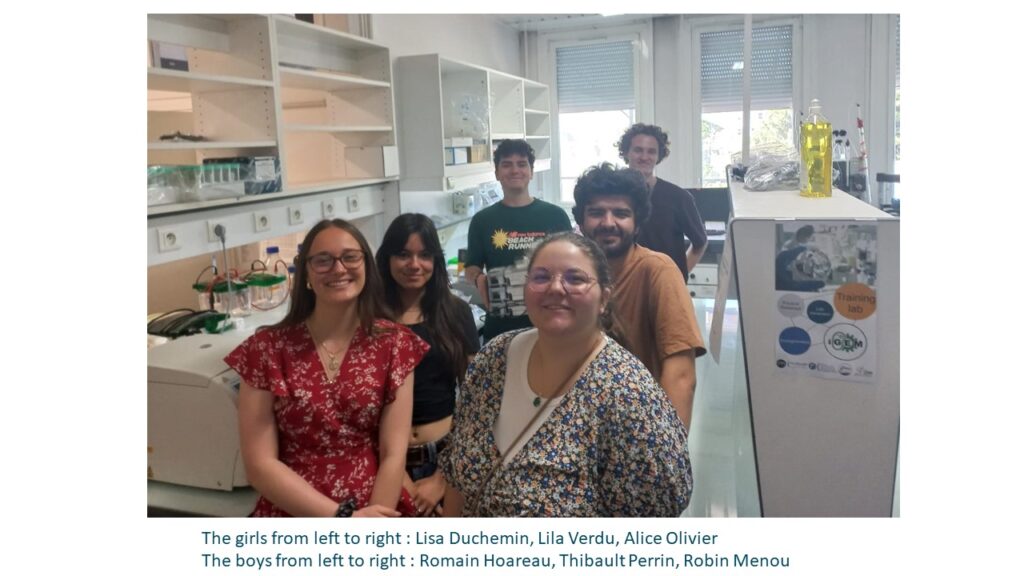
The iGEM 2024 team joined the LISM on the 3rd of June. You will find them on the 1st floor of the BM building. This year’s wet-lab team is made up of L3 Biocell students.

The aim of their project is to propose an innovative and sustainable alternative to conventional methods of controlling viral plant diseases, in particular barley yellow dwarf virus (BYDV), which causes major economic damage to cereal crops worldwide. They plan to genetically modify a bacterium derived from the microbiota of insect vectors, such as aphids, so that it is able to detect the presence of BYDV within these insects and induce their selective death without affecting other organisms.
The core of their approach lies in the use of receptors specifically designed to recognise the target virus, in this case BYDV. These synthetic receptors are made up of three essential functional domains: an extracellular domain composed of VHH, a second transmembrane domain that anchors the receptor in the cell membrane, and a cytoplasmic domain, the cacB DBD domain, which acts as a genetic switch. Dimerisation of this domain and, more generally, of the receptor in the presence of the virus triggers a transcriptional cascade, leading to the massive expression of bacterial toxins that are lethal to the insect vector.
Published on 15/06/2024
